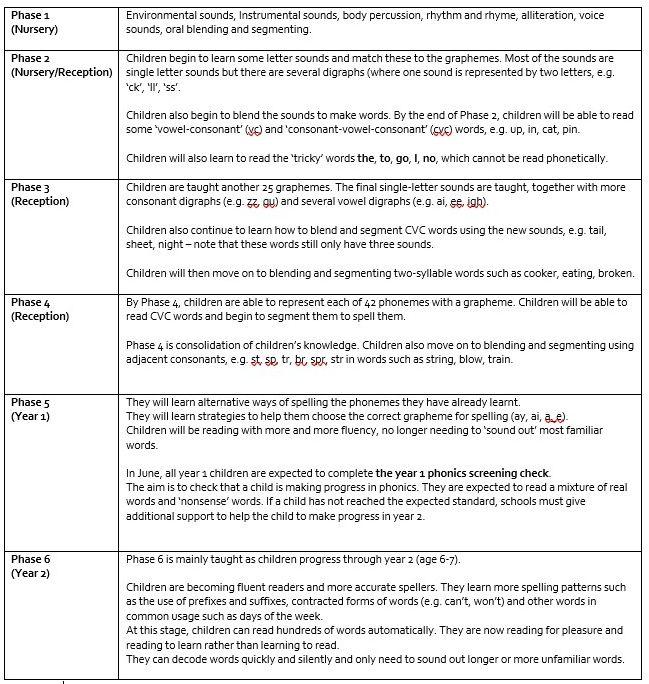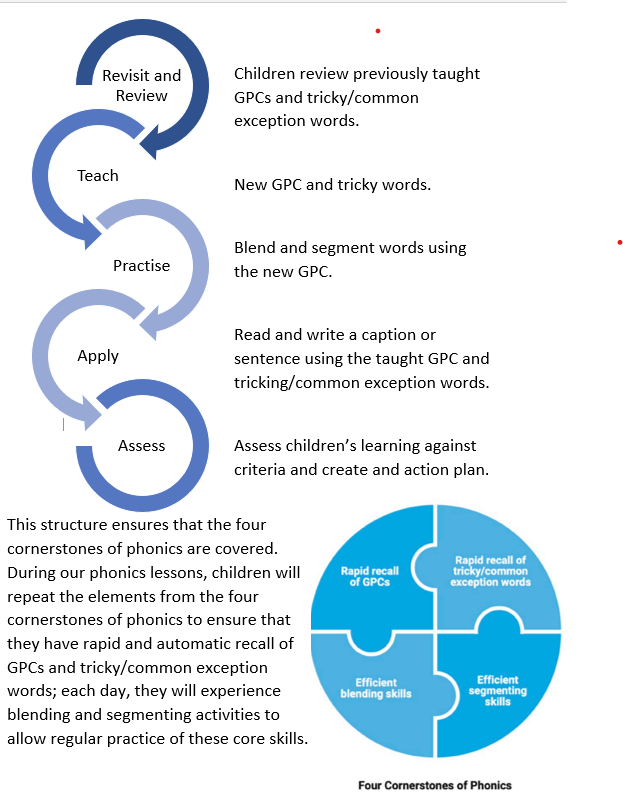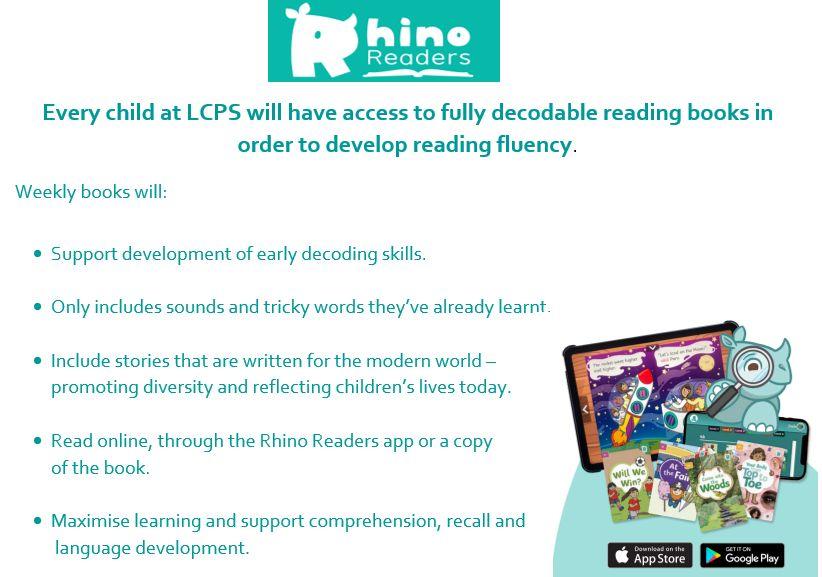Phonics
Phonics
Teaching children to read is an essential part of their learning. Reading is a skill that helps to develop vocabulary and improve understanding of words. In synthetic phonics lessons, children learn the relationship between letters and sounds. Teaching them to recognise the sounds each letter makes and how to put them together, enables them to read. It also helps with spelling as they learn how to break up words into sounds, in order to spell them. The idea that surrounds synthetic phonics is that once they are comfortable with the letters and sounds that make up words, children should even be able to read ‘nonsense’ words that don’t actually exist in the English language.
Our Aims:
• To embed a cohesive whole-school approach with progression and continuity in the teaching and learning of phonics throughout the school with a focus on quality first teaching.
• To ensure that systematic synthetic phonics (following the Twinkl Phonics programme) is the first approach pupils use to help with their reading and spelling.
• To ensure children learn to read and write all 44 graphemes in the English language.
• To ensure children have specific strategies to identify and decode common exception words (tricky words).
• To have robust assessment procedures to check progress and identify pupils in need of intervention.
• For pupils to apply their phonic knowledge in their reading and writing across the whole curriculum.
• For pupils to develop a love of reading and enjoy reading for pleasure confidently across a range of genres.
Take a look at the Parent Directory document which contains lots of information about phonics is taught and you could support your child at home. This includes some great videos showing the pure sounds associated with each grapheme.



